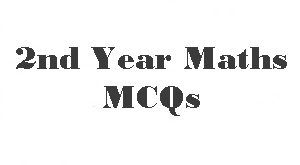If you are searching for Maths 1st Year Chapter 2 Sets, Functions, and Groups MCQs with Answers, then this is the right page to get them. This chapter is about Sets, Functions, and groups. There are different types of sets like the equal set, superset, universal set, etc. There are several operations applicable to these sets. These sets have different properties and laws. Similarly, functions have different types. They have several properties and concepts. So, this is the introduction about this chapter. For entry tests, there is a big portion of Maths subject there and students have to do well to get good marks in the test. This portion is included in different entry tests like ECAT, NET, NTS, PU Entry Test, FAST Entry Test. So, the student needs to perform well to get good marks in it. To prepare for the test, we have provided several important Questions here. Check the important MCQs given below.
Maths 1st Year Chapter 2 Sets, Functions, and Groups MCQs with Answers

Question#1: If A={4,3}, then P(A) is:
- {ϕ, {4}, {3}, {4,3}}
- {{3},{4},{4,3}}
- { ϕ,{3},{4}}
- { ϕ, {3,4}}
Answer
Answer
Question#2: For any subset B of X, BUB=?
- ϕ
- X
- BUX
- B∩B
Answer
Answer
Question#3: Which of the following is not a binary operation for the set of natural numbers?
- +
- –
- x
- All of these
Answer
Answer
Question#4: The identity element in N, w.r.t “+” is:
- 1
- 2
- 0
- Not exist
Answer
Answer
Question#5: The truth value of the statement [(pèq) ^p]è ~ p is false, when:
- p is true, q is false
- p is true, q is true
- p is false, q is true
- None of these
Answer
Answer
Question#6: If n(A)=6 and n(B)=4, then maximum value of n(A-B) is:
- 6
- 4
- 2
- None of these
Answer
Answer
Question#7: Let S be a non-empty set, then what is the identity element of (P(S),∩)?
- Universal set
- S
- No identity element
- ϕ
Answer
Answer
Question#8: AxB=BxA iff:
- A ⊂ B
- B ⊂ A
- A=B
- None of these
Answer
Answer
Question#9: The statement (~p∧q) è p is:
- Tautology
- Contingency
- Absurdity
- None of these
Answer
Answer
Question#10: If S={1,3,5,7} is a group w.r.t multiplication under modulo 8 then inverse of 5×3 is:
- 1/7
- 1
- 7
- None of these
Answer
Answer
Question#11: P∩E=?
- 2
- ϕ
- {2}
- None of these
Answer
Answer
Question#12: If A is an empty set then n(P(P(P(A))))=?
- 6
- 16
- 2
- 4
Answer
Answer
Question#13: If the number of elements in set A are 3 and the total number of elements in binary relations on AxB are 64, then the number of elements of B are?
- 3
- 2
- 4
- None of these
Answer
Answer
Question#14: If AUB=B then which of the following is true?
- A⊂B
- A≠B
- B⊂A
- A∩B= ϕ
Answer
Answer
Question#15: The set E={2x, x ∈ R}, with respect to multiplication is:
- Monoid
- Non-Abelian group
- Abelian group
- Semi-group
 Online Exams Tests Preparation
Online Exams Tests Preparation


